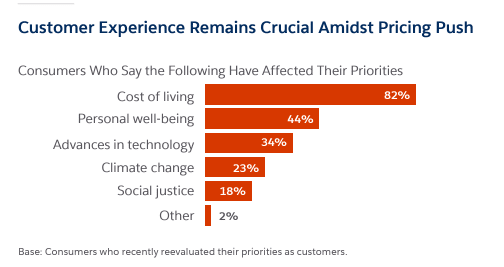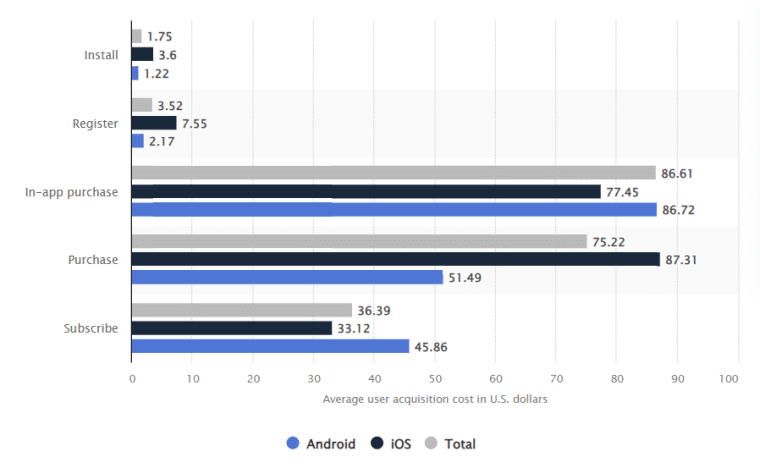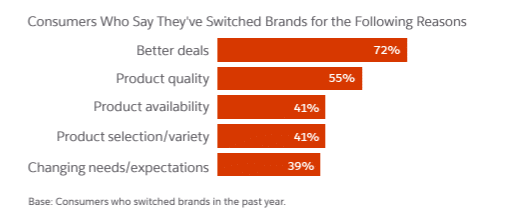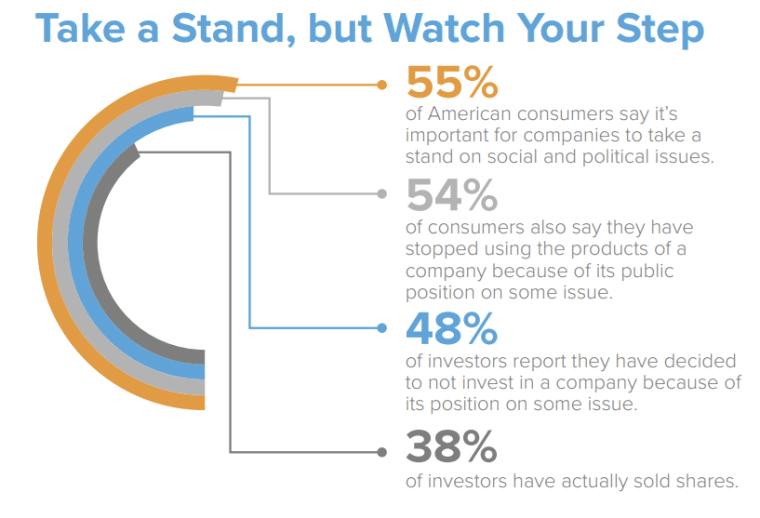In the competitive marketing landscape, especially for SaaS companies and established businesses, balancing customer acquisition vs retention is a key consideration to achieve sustainable growth and increased revenue. Decision-makers must weigh customer acquisition costs against customer retention costs carefully to optimize marketing spend.
These insights from our experts at Business2Community will present data and analysis, highlighting the cost-effectiveness and long-term value of focusing on customer lifetime value through strategic approaches to acquiring and retaining customers. This analysis is designed to empower you to make decisions that support your business’s growth objectives and financial constraints, ensuring a solid customer base and a higher success rate.
Customer Retention vs Acquisition – What You Need to Know
- It is five times more expensive to acquire a new customer than it is to retain an existing one.
- 72% of consumers have switched brands to get better deals.
- Poor customer service has driven 80% of customers to switch brands.
- Over half of customers ceased doing business with a brand because of social or political stances.
- 88% of customers expect that companies should speed up their digital initiatives.
Customer Acquisition vs. Retention for Sales: Analyzing the Ease of Selling
Despite the fact that acquiring new customers costs five times more than retaining existing ones, Quadriant reported in 2022 that 44% of companies prioritized customer acquisition over retention. This contrast demonstrates the inherent efficiency in focusing on customer retention strategies. Existing customers have already developed trust in the brand, which shortens the sales cycle compared to new prospects.
According to a 2022 report on subscribers by Recurly, 62% of consumers prioritized ease and flexibility during the signup process, adjustment, and cancellation phases. This clearly shows that businesses aiming to expand their subscriber base must refine these aspects of their customer journey.
Additionally, individuals were on the lookout for promotions like free trials and sample products (51%), as well as opportunities to earn rewards or discounts (47%), highlighting the significance of cost benefits in their decision-making process.
When it comes to acquiring new customers, flexibility in ordering was deemed essential by 42% of the participants in the Recurly stufy. It’s clear that there is a necessity for companies to invest in optimizing the user experience just as much as they focus on their products or services.
Customer engagement emerged as a critical component in building long-lasting relationships, with 79% of customers preferring email communications. Following closely, 50% favor text messages and 41% of those aged 18 to 29 express a preference for in-app or mobile push notifications. This diversity in communication preferences indicates the importance of adopting a multi-channel approach to stay connected to retain customers.
The Value of the Customer Experience
As per the 6th edition of the State of the Connected Customer from 2023, 62% of consumers had recently reassessed their priorities, prompted by compounding factors like inflation and technological advancement. Finances are a primary concern, with the cost of living being the top factor that influenced their priorities.
However, customers aren’t solely driven by price, leaving opportunities for brands to differentiate themselves beyond offering discounts. Both product quality and customer experience continue to play pivotal roles, with 80% of customers emphasizing the significance of the overall experience provided by a company, on par with its products and services.
According to the 4th edition of State of the Connected Consumer report by Salesforce from 2020, 71% of consumers indicated that they consider customer service when deciding whether or not to make a purchase. The initial interaction a new customer has with a business often sets the tone for the entire relationship. Superior customer service can tip the scales in favor of acquiring a new customer by creating a positive first impression that signifies trust and reliability.
From the same Salesforce report, 91% of consumers reported that a positive customer service experience increases the likelihood of them making another purchase. This emphasizes the importance of retaining existing customers; they are more likely to make repeated purchases and become loyal patrons.
According to a 2022 survey by Gartner, 38% of Gen Z and Millennial customers said they would likely give up if an issue can’t be resolved in self-service. In the digital age, the convenience and efficiency of the digital experience are paramount for both acquisition and customer retention efforts. A user-friendly and responsive website can facilitate smoother transactions for new customers and encourage repeat business from existing customers.
The trend toward “self-service or no-service” among younger demographics holds implications for customer acquisition and retention efforts. Gen Z and Millennial consumers have revealed that if they encounter difficulties in resolving issues through self-service:
- Their usage of the service or product is likely to decrease (55%).
- They are less inclined to make future purchases from the company (52%).
- They may voice negative opinions about the company or its offerings (44%).
56% of consumers are inclined to purchase from a brand that offers a loyalty program, according to the 5th Edition State of the Connected Customer report by Salesforce from 2022. Reducing barriers such as complexity in tracking and redeeming rewards can enhance loyalty program engagement, thereby improving customer retention.
In August 2019, the average cost to acquire a mobile app user who registered or created an account was $3.52. Costs can fluctuate based on user actions and operating systems. Making an in-app purchase had the highest average customer acquisition cost across both Android and iOS, at $77.45 for Android and $86.72 for iOS.
Why Do Customers Leave a Business?
According to the 6th edition of Salesforce’s State of the Connected Customer report published in 2023, the top reason consumers switched brands in the previous year was for better deals (72%). Other factors influencing brand switching included:
- Product quality
- Product availability
- Product selection/variety
- Changing needs/expectations
A 2021 study completed by Qualtrics revealed that 80% of customers have switched brands due to poor customer service experience, highlighting the thin margin for error in today’s competitive marketplace. 43% of consumers are likely to switch to a competitor after just a single negative interaction.
Price sensitivity is another major factor. 91% of subscribers expressed concern about inflation and its impact on the cost of goods and services in 2022 according to the same Recurly report we looked at earlier. This shows the need for businesses to continually assess and validate their value proposition against competitors to prevent churn.
Another critical factor influencing customer and investor loyalty is a company’s public stance on social and political issues. Up to 54% of consumers have reported stopping the use of a company’s product or service because of its position on certain issues according to a 2019 Aflac CSR Survey. Similarly, 48% of investors have refrained from investing in a company for that same reason. Taking a stand on an issue can boost brand loyalty but it can easily become divisive.
Technological advancements also play a significant role in influencing customer loyalty. The 4th edition of State of the Connected Consumer report indicated that 88% of customers expected companies to accelerate digital initiatives due to the COVID-19 pandemic. This highlights the importance of a seamless digital customer experience in retaining customers in an increasingly online world.
Should You Invest in Customer Acquisition or Customer Retention?
Deciding where to channel investment between customer acquisition and retention should not be an either/or proposition. The data and insights presented here highlight the unique advantages and roles both strategies play within a holistic marketing approach.
Given the cost-effectiveness of customer retention and its high probability of sales, undervaluing its importance could mean missing out on leveraging existing relationships that are ripe with opportunity. Simultaneously, the vitality of customer acquisition cannot be disregarded as it injects fresh life into the business, ensuring its growth and competitiveness in the market.
Ideally, your business should strive for a balanced investment in both areas, tailoring your strategy to your specific market position, growth phase, and long-term goals. A nuanced understanding of your customer lifecycle coupled with data-driven insights on customer behavior will be crucial in determining the right balance.
Ultimately, the synergy between acquiring new, loyal customers and nurturing existing ones will sculpt a sustainable path toward business growth and resilience.




